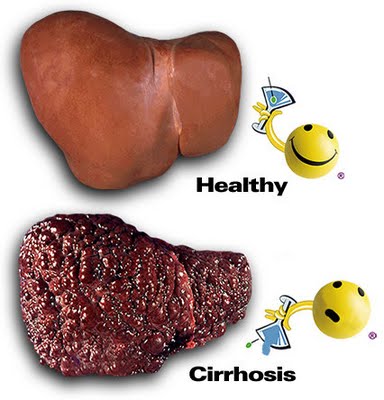
Cirrhosis is an abnormal liver condition in which there is irreversible scarring of the liver.
Cirrhosis
It is a condition in which the liver slowly deteriorates and is unable to function normally due to long lasting injury or chronic. The liver is the body’s largest internal organ. The liver is called the body’s metabolic factory because of the important role it plays in metabolism. The buildup of scar tissue that causes cirrhosis is usually a slow and gradual process. Scar tissue replaces healthy liver tissue and partially blocks the flow of blood through the liver.
Stages of cirrhosis: In the early stage, the liver continues to function. However, as cirrhosis gets worse and scar tissue replaces more healthy tissue, the liver will begin to fail. Chronic liver failure, which is also called end-stage liver disease, progresses over months, years, or even decades. With end-stage liver disease, the liver can no longer perform important functions or effectively replace damaged cells.
Causes of cirrhosis: Liver damage, chronic hepatitis C, alcoholism, Nonalcoholic fatty liver disease and nonalcoholic steatohepatitis, hyperlipidemia, cystic fibrosis, gallstones, Wilson disease.
Symptoms of cirrhosis: weakness, loss of appetite, weight loss, nausea, edema, jaundice.
Complications of cirrhosis: Portal hypertension, mental confusion, ascites, splenomegaly, hepatic encephalopathy, hepatorenal and hepatopulmonary syndromes.
Diagnosis: A medical and family history, a physical exam, a blood test (bilirubin, creatinine), imaging tests (Computerized tomography, Magnetic resonance imaging), a liver biopsy.
Treatment:
The following are the drugs which are used to treat the complication of cirrhosis
Cirrhosis, alcohalism, fatty liver